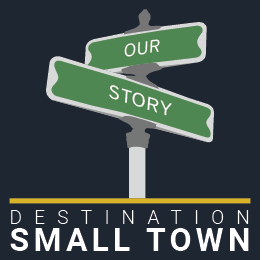Since the founding of our communities, organizations, businesses and citizens have stepped forward to build and serve their community. Click on any of the logos below to learn about those who made this website possible! If you would like to learn about becoming a sponsor CLICK HERE!
- County: Pepin County, WI
- Region: Southwest WI
- Sponsors
- About Stockholm, WI
- Businesses
- Community Organizations
- Faith Organizations
- Festivals and Events
- Points of Interest
- Veterans
- Visit Website
Learn how to Contribute to any of the above categories.
No news yet. Got some news? Hit that NEW POST button!
About Stockholm, WI
In 1851 Swedish adventurer Erik Petterson climbed the bluff behind Stockholm, saw Lake Pepin spreading out before him, and declared it the ideal site for a settlement. In the next year he made his first land purchase and two years later, he and his brother Jacob each brought over a party of immigrants. The land along a recess in the shoreline was surveyed, and in 1856 Stockholm was officially born.
In short order, the village became a stopover for Scandinavian immigrants to western Wisconsin as well as a thriving farming center. At its population peak of 280 in 1880, it boasted three general stores, two hardware stores, and two blacksmith shops. In 1886 the railroad connected the village to farms and commercial centers up and down the river.
As the rural population began to dwindle after World War I, the village stayed alive with grain warehousing and brokerage, clamming activity, a commercial fishing operation, ice harvesting for a wide radius of cities, and dealerships in newly mechanized farm machinery.
After World War II, the flight to the cities and loss of the railroad station nearly took Stockholm off the map. But the beauty and tranquility of the land was not lost on a new generation of visitors. Starting in the 1970’s, artists and urban outsiders began to trickle into the village and surrounding countryside, reviving old storefronts and homes and creating a vibrant cultural life. A new breed of entrepreneurs arrived on their heels, each attuned to the possibilities of a unique merchant community, responsive to the melding of Swedish heritage, natural beauty, and the hum of artistic activity.
Businesses of Stockholm, WI
The businesses of our towns are truly the lifeblood of each community, click on any businesses below to learn about them, to learn how to add your business to your town and county page CLICK HERE!
Pepin County, WI
Visit our county page and you will find information about our town and county's points of interest, festivals/events and faith community. You also will learn about the community organizations that have built and continue to build strong communities (chambers, community groups, and departments, etc) and much more when you visit the Pepin County, WI page.
